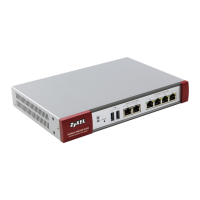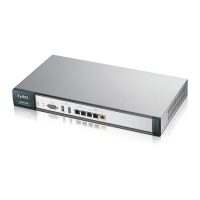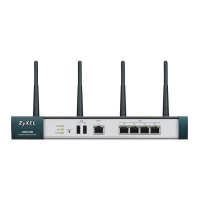ZyWALL USG 100/200 Series User’s Guide
757
CHAPTER 42
Services
42.1 Overview
Use service objects to define TCP applications, UDP applications, and ICMP
messages. You can also create service groups to refer to multiple service objects
in other features.
42.1.1 What You Can Do in this Chapter
•Use the Service screens (Section 42.2 on page 758) to view and configure the
ZyWALL’s list of services and their definitions.
•Use the Service Group screens (Section 42.2 on page 758) to view and
configure the ZyWALL’s list of service groups.
42.1.2 What You Need to Know
IP Protocols
IP protocols are based on the eight-bit protocol field in the IP header. This field
represents the next-level protocol that is sent in this packet. This section
discusses three of the most common IP protocols.
Computers use Transmission Control Protocol (TCP, IP protocol 6) and User
Datagram Protocol (UDP, IP protocol 17) to exchange data with each other. TCP
guarantees reliable delivery but is slower and more complex. Some uses are FTP,
HTTP, SMTP, and TELNET. UDP is simpler and faster but is less reliable. Some uses
are DHCP, DNS, RIP, and SNMP.
TCP creates connections between computers to exchange data. Once the
connection is established, the computers exchange data. If data arrives out of
sequence or is missing, TCP puts it in sequence or waits for the data to be re-
transmitted. Then, the connection is terminated.
In contrast, computers use UDP to send short messages to each other. There is no
guarantee that the messages arrive in sequence or that the messages arrive at all.

